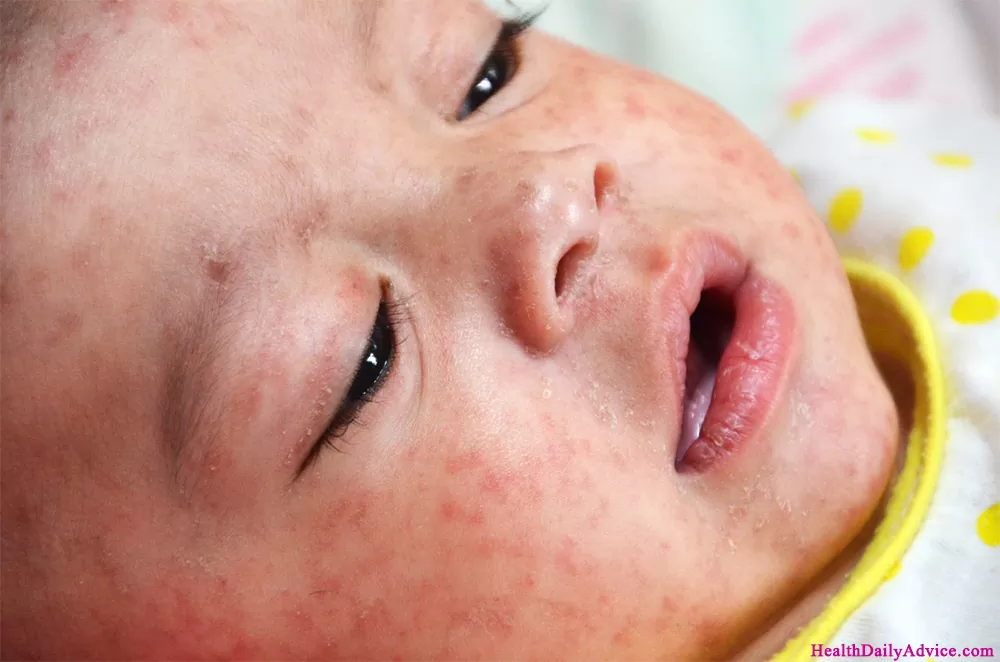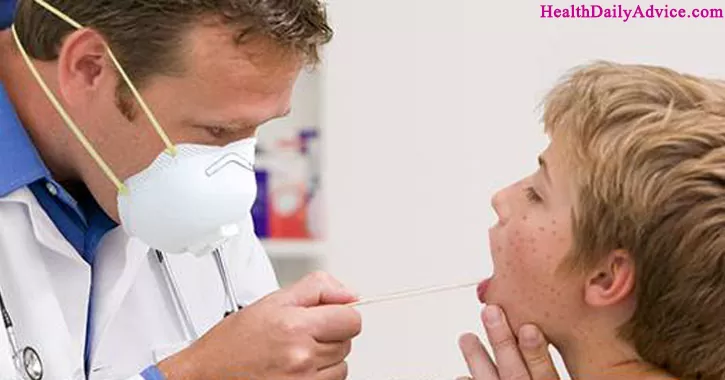Introduction:
Measles (Rubeola) is one of the most contagious infectious diseases and remains a leading cause of death particularly among young children, especially in areas with low rates of vaccination. Measles is also called rubeola, which can easily get confused with German measles which is also called rubella similar sounding names but very different viruses.
Causes, Symptoms, Diagnosis, Treatment (Vaccines) & Pathology:
So in this Post, We Tell you About the Causes, Treatments, Vaccines, and Pathology of Measles.
Causes:
- The measles virus causes regular measles; seriously, the species is the measles virus, of the genus Morbillivirus and family Paramyxoviridae.
- The reason why this guy is so contagious is that it’s airborne, and spreads via tiny liquid particles that get flung into the air when someone sneezes or coughs, and can live for up to two hours in that airspace or nearby surfaces.
- If someone breathes in that air or touches a surface and then touches their eyes, their eyes, or their mouths, they can become infected.
- Measles is so contagious that if one person has it, 90% of nearby non-immune people will also become infected.
- Once the measles virus gets onto the mucosa of an unsuspecting person, it quickly starts to infect the epithelial cells in the trachea or bronchi. Measles virus uses a protein on its surface called hemagglutinin, or just H protein, to bind to a target receptor on the host cell, which could be CD46, which is expressed on all nucleated human cells, CD150, aka signaling lymphocyte activation molecule or SLAM, which is found on immune cells like B or T cells, and antigen-presenting cells, or nectin-4, a cellular adhesion molecule.
- Once bound, the fusion or F protein helps the virus fuse with the membrane and ultimately get inside the cell. Now, this virus is a single-stranded RNA virus, and it’s also a negative sense, meaning first has to be transcribed by RNA polymerase into a positive-sense mRNA strand.
- After that, it’s ready to be translated into viral proteins, wrapped in the cell’s lipid envelope, and sent out of the cell as a newly made virus. Within days, the measles virus spreads through local tissue and is picked up by dendritic cells and alveolar macrophages, and carried from that local tissue in the lungs to the local lymph nodes.
- From there it continues to spread, eventually getting into the blood and spreading to more lung tissue, as well as other organs like the intestines and the brain. Now it typically takes 10-14 days from the time that the virus enters the body at the beginning of symptoms, and this is the incubation period.
Symptoms:
- Once symptoms start, we have entered the prodromal period which typically lasts around three days and starts with a high fever and three a cough, conjunctivitis or inflammation and redness of the white part of the eye, and coryza swelling in the mucous membrane of the nose, essentially a stuffy nose.
- 1-2 days later comes the enanthem which is a rash on the mucus membranes, that looks like salt grains on a wet background. These are called Koplik spots and are small white spots that are commonly seen on the inside of the cheeks opposite the molars.
- After these initial prodromal symptoms come the exanthem phase, which is where a red, blotchy, maculopapular rash spreads in a cephalocaudal progression.
- In other words, the exanthem starts at the head (or cephalon) and spreads to the extremities or ends of the body (or caudal). This rash fades after about four days and leads to the recovery phase which can last for another 10-14 days, with the final symptom usually being a persistent cough.
- In general, infected people are most contagious starting from the final day of the incubation period through the prodromal and exanthem phase, which roughly works out to be four days before to 4 days after the onset of the rash. The good news is that once it’s all over and someone has recovered from measles they have lifelong immunity.
- Since measles affects various organs like the lungs, intestine, and brain, it can lead to complications such as pneumonia, diarrhea, and, on rare occasions, encephalitis all of which can lead to death.
- In addition, measles can suppress the immune system for up to 6 weeks, and this can contribute to bacterial superinfections like otitis media and bacterial pneumonia. All of these complications are worst among young infants who typically have the highest rates of mortality during a measles outbreak. Another severe and often fatal complication for children under two years old is the development of subacute sclerosing pan encephalitis, which can happen 7-10 years later.
- This is thought to be caused by a persistent measles virus infection, possibly due to an abnormal immune response or a mutated strain of the measles virus, which leads to chronic inflammation of the entire brain. The symptoms of SSPE are initially pretty subtle for example, mood changes, but eventually become severe and dramatic and can include seizures, coma, and if left untreated, death.
- For people who are immunocompromised (for example people with HIV-AIDS), their immune-mediated responses are impaired, that being said if they get measles, they might not develop some symptoms that are a result of the immune system responding to the measles virus, like the enanthem (or the Koplik spots) or the exanthem (the rash).
- These people though also have higher rates of pneumonia and encephalitis which contribute to a higher mortality rate.
Diagnosis:
- Diagnosis of Measles is usually made via serology looking for measles antibodies in blood serum, and the disease is usually most likely to occur among unvaccinated individuals.
- That said, the measles vaccine is a live attenuated immunization, essentially meaning it’s been weakened, and it’s given between 12-15 months of age and again between 4-6 years of age, and it has an impressive 95% vaccine efficacy rate, which means that out of a hundred cases of measles among unvaccinated people, 95 would have been prevented by the vaccine.
- In addition to the vaccine, another source of protection for young infants is their mother Santi-measles immunoglobulin which the fetus gets transplacentally and lasts until about 9 months of age.
Treatment:
- When measles does develop, there isn’t a specific antiviral treatment. Instead, the medications are aimed at treating superinfections, maintaining good hydration with adequate fluids, and pain relief.
- Some groups are also given vitamin A, like young children and the severely malnourished, which acts as an immunomodulator that boosts the antibody responses to measles and decreases the risk of serious complications.
Measles Vaccines:
Finally, in outbreak settings, both measles vaccine and measles immunoglobulin can be given to household contacts and those at high risk like pregnant women and young infants to help prevent others from getting sick.
Pathology:
Alright so a quick review of measles: measles is an airborne pathogen that’s highly contagious, and causes a cough, conjunctivitis, and coryza, as well as complications like pneumonia and encephalitis, and can be prevented through vaccination.
FAQS
Measles, also known as Rubeola, is a highly contagious viral infection caused by the measles virus. It primarily affects the respiratory system and can lead to severe complications.
Measles is caused by the measles virus, a member of the paramyxovirus family. It spreads through respiratory droplets when an infected person coughs or sneezes and can also be transmitted by touching surfaces contaminated with the virus.
Symptoms include high fever, cough, runny nose, red eyes, and a characteristic red rash that typically starts on the face and spreads to the rest of the body. Measles can lead to complications like pneumonia, encephalitis, and even death, especially in young children.
Diagnosis is usually based on clinical symptoms, including the characteristic rash, along with a history of exposure to an infected person. Laboratory tests, such as blood tests or throat swabs, may be conducted to confirm the diagnosis.
There is no specific antiviral treatment for Measles. Supportive care to manage symptoms, such as fever reducers, hydration, and rest, is typically recommended. Prevention through vaccination is the most effective strategy against measles.
Note:
So in This Post, Measles (Rubeola) What other points can you think of/have experienced? Let me know in the comments.
If you found this helpful feel free to share your experience if you can relate to these points and if you are comfortable share
For More Articles Related to Measles (Rubeola) Stay Tuned To our Site: Health Daily Advice











